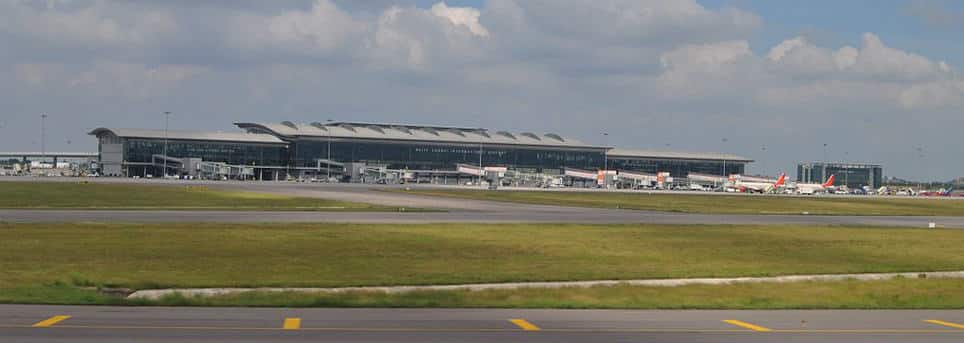The Challenge
The client, GMR, asked AiQ Consulting to undertake an Airport Capacity Assessment to augment capacity at Hyderabad International Airport (also known as Rajiv Gandhi International Airport), utilising the existing Terminal footprint.
Working with the GMR Management Team, Gebler Tooth Architects and ADC AiQ were required to provide resource and spatial demand against IATA Ed 10 standards including Kerbside, External Screening, Check-in, Emigration, Internal Screening, Retail and Gates. Models and solutions had to be developed to support predicted Terminal, Passenger & Baggage demand and capacity requirements.
The Solution
The solution was to calibrate the existing terminal schedule against the existing footprint to ensure that it met current demands, and the standards required from IATA.
Using assumptions calibrated against a whole day during the summer peak period, we tested activity against the model future option including both the IATA Standards and Architectural Implications, provided by Gebler Tooth Architects.
To provide a clear demonstration to the client, we used our bespoke 2D modeling software, Transvision AiR, to show a 2D Terminal Passenger simulation model analysing Passenger Flows throughout the terminal, see below. From this simulation, derived spatial and capacity options were evaluated.
AiQ also provided a 2D Baggage System simulation model analysing Baggage Flows through the system including collector line, simple sortation, Hold Baggage Screening and Make-up. Again this simulation was undertaken against existing schedules and assumptions to create a calibrated model, from which we could derive and evaluate spatial and capacity options. Baggage Make-up demand and capacity plans, Passenger Check-in demand capacity plans, Emigration demand and Screening demand were also investigated.
Throughout the process AiQ worked remotely, regularly video conferencing with the client and visiting the airport every six weeks. These key sessions presenting the ongoing work also gave us the chance to develop ideas and options with the management team.
The Benefit
As well as fulfilling the brief, AiQ were able to recommend additional capacity in Kerbside, External Screening, Passenger Internal Screening and Gates, to the benefit of the client.
We also informed on new and different processes for Kerbside and Emigration, and provided Passenger & Baggage Arrival demand & capacity plans. This analysis of Baggage Offload, Reclaim carousel, Passenger Immigration populations & Reclaim Passenger populations, included mitigation and contingency requirements.
Throughout the process AiQ Consulting worked with the partner consultancies, the management team and other stakeholders, to provide additional capacity and increased efficiency to the client and the airport.
- Use of data and simulation to provide effective capacity planning
- Smooth efficient operations
- Increased capacity utilising existing Terminal footprint
- Evaluation of spatial and capacity options
- Efficient stakeholder management
- Prevented unnecessary investment costs
- Resource utilisation increased
- Improved passenger customer service and airport experience

